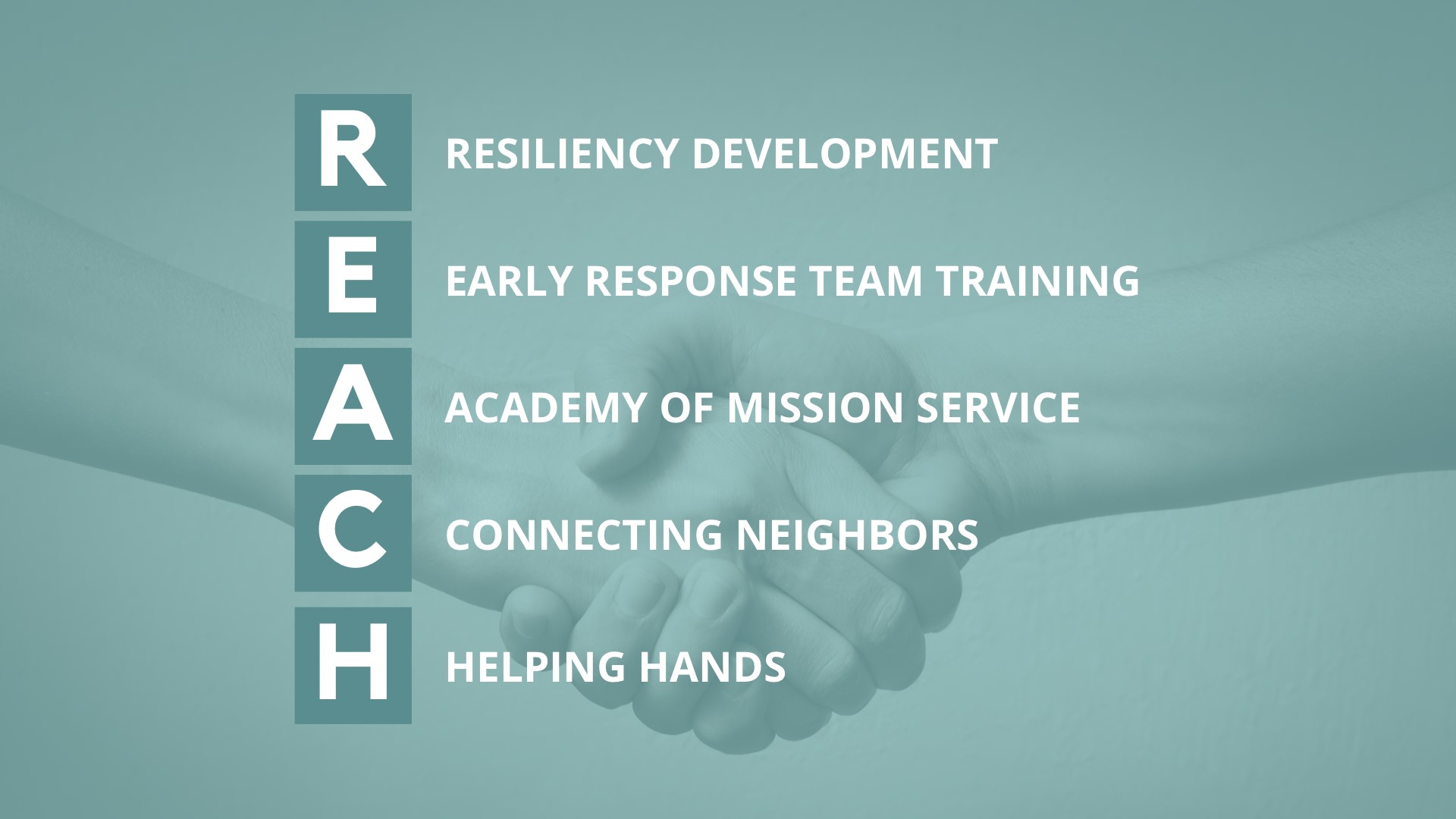 The North Texas Conference has developed a comprehensive plan for approaching Disaster Response. Welcome to REACH.
The North Texas Conference has developed a comprehensive plan for approaching Disaster Response. Welcome to REACH.
Resiliency Development
Exploring systemic barriers to community resilience
Systemic barriers in a community result limit its recovery to the shape it was in immediately before the said disaster. In other words, the community remains as vulnerable and unprepared to face the next disaster as it did the last one.
Resiliency development explores what those barriers are in each community and how together the whole community can create community resilience to both prepare for the next disaster and recover more effectively from it.
Resiliency development strengthens relationships and connections within the community.
Early Response Team Training
Existing UMCOR-certified training for early responders
The initial response to any disaster, after the rescue phase, is the deployment of ERTs. These trained and certified teams focus on tarping roofs, mucking out waterlogged homes, removing damaged trees and moving all debris to the curbside.
The basic certification course lasts eight hours and certification is valid for three years. Recertification is a shortened four-hour course.
Academy of Mission Service
Formalizing continuing education for those involved in the Disaster Response ministry
Our work requires many skills to be effective: physical skills to accomplish cleanup tasks after a disaster, the construction skills to repair and rebuild homes, the emotional and spiritual skills to care for those who have been affected by disasters and a sound theological understanding of what we are doing and why.
All these are covered in courses that will be offered both online and in person.
Connecting Neighbors
Three-module curriculum from UMCOR developed to better prepare for and mitigate the impacts of disasters
- Module 1: Ready Congregants focuses on preparing individuals and families to be disaster-ready.
- Module 2: Ready Churches emphasizes the importance of protecting church property and the people within, before and immediately following a disaster, as well as appropriate use of church property in disaster response.
- Module 3: Ready Response encourages churches to explore their capacity for various disaster response ministries and to consider ways to engage community partners.
Helping Hands
“Blue sky time” deployment of ERTs to enhance team effectiveness and contributions
In each of our four districts, we are identifying projects that will allow teams activate on short-term, close-to-home deployments to utilize their skills in meaningful ways and build team organization and camaraderie. These projects will include church and home repair, focusing on those who need assistance in repairing and restoring property.
Have a question or want to learn more, email NTC Disaster Response Coordinator Jeremy Basset.
